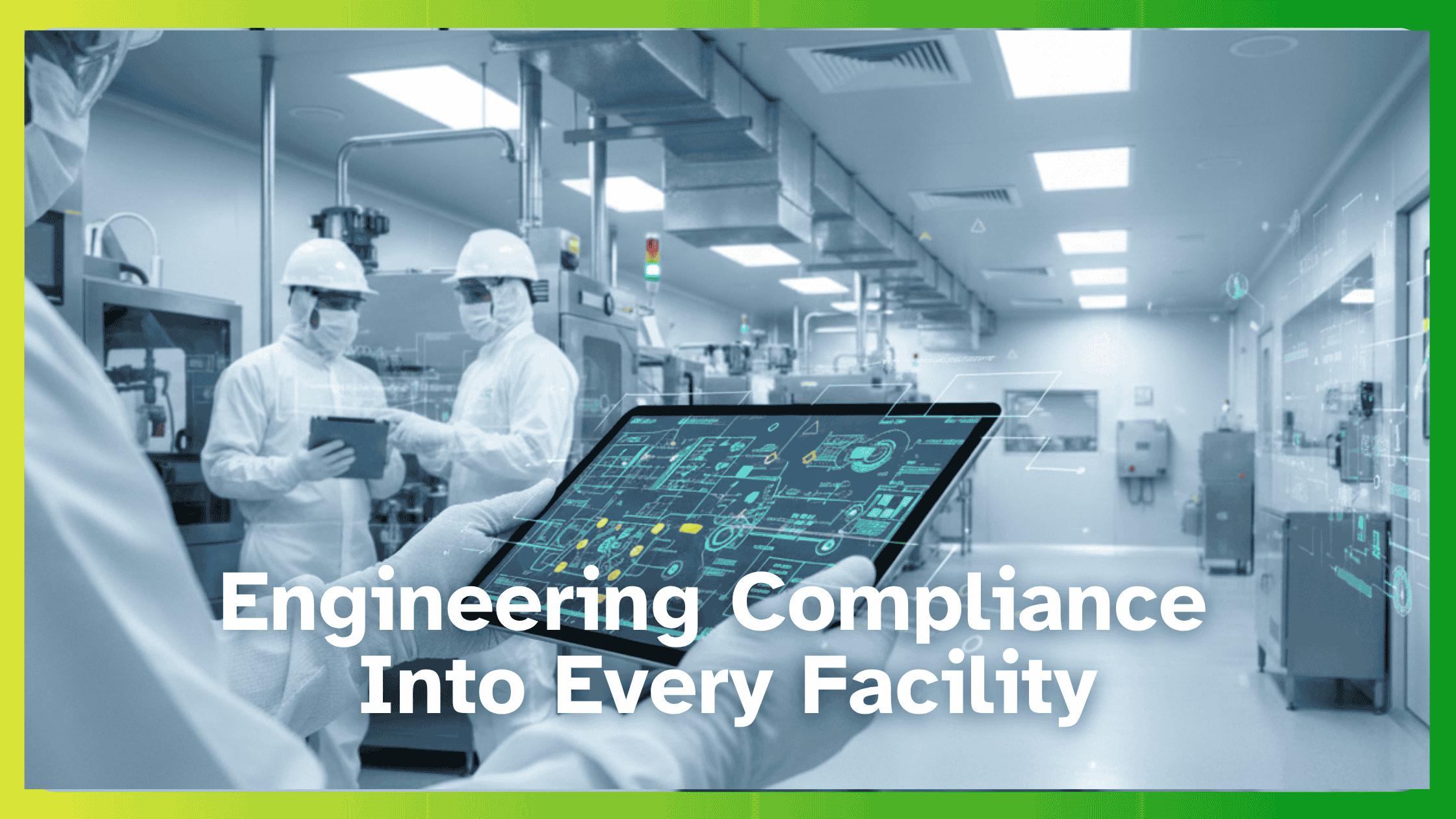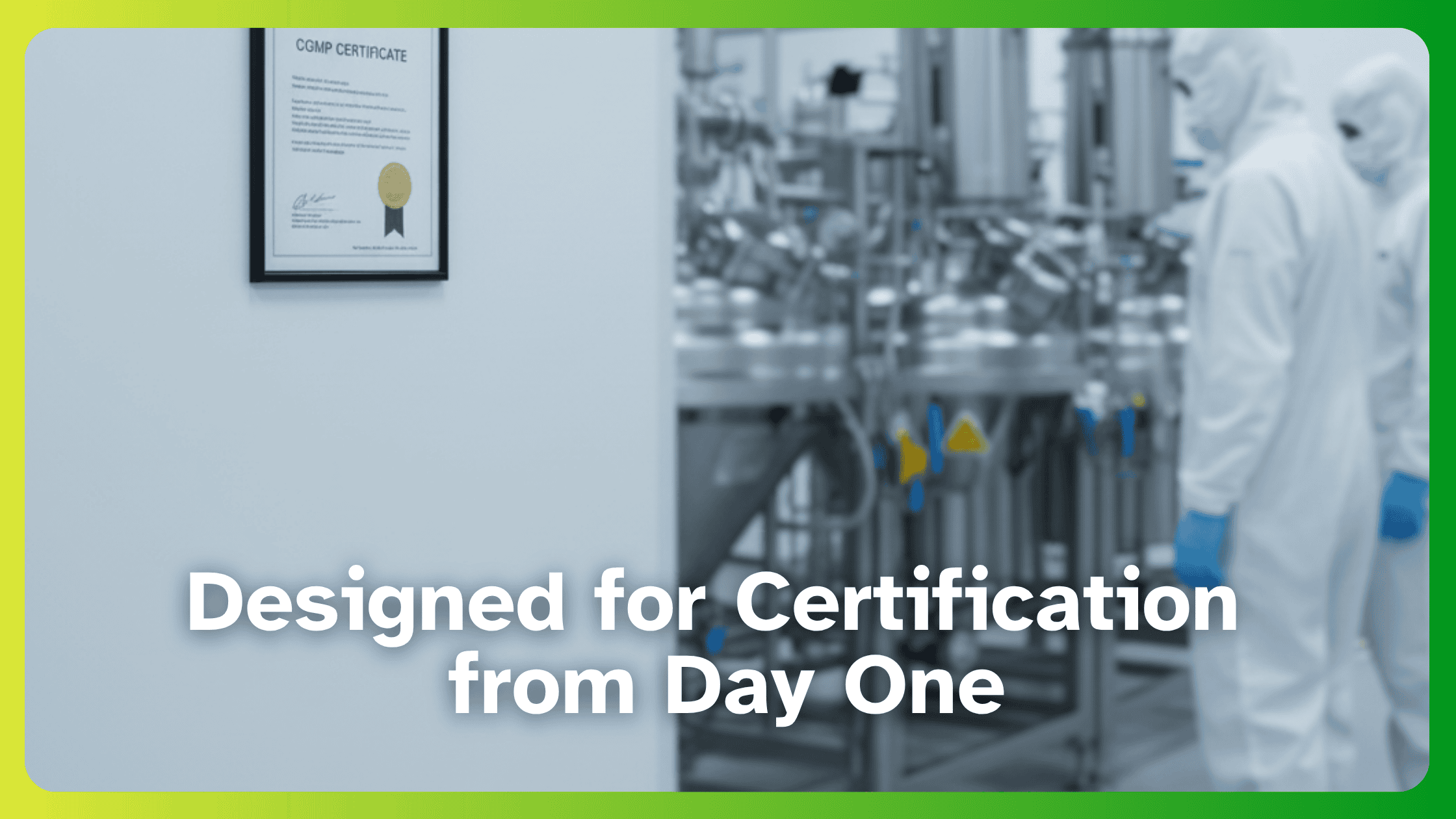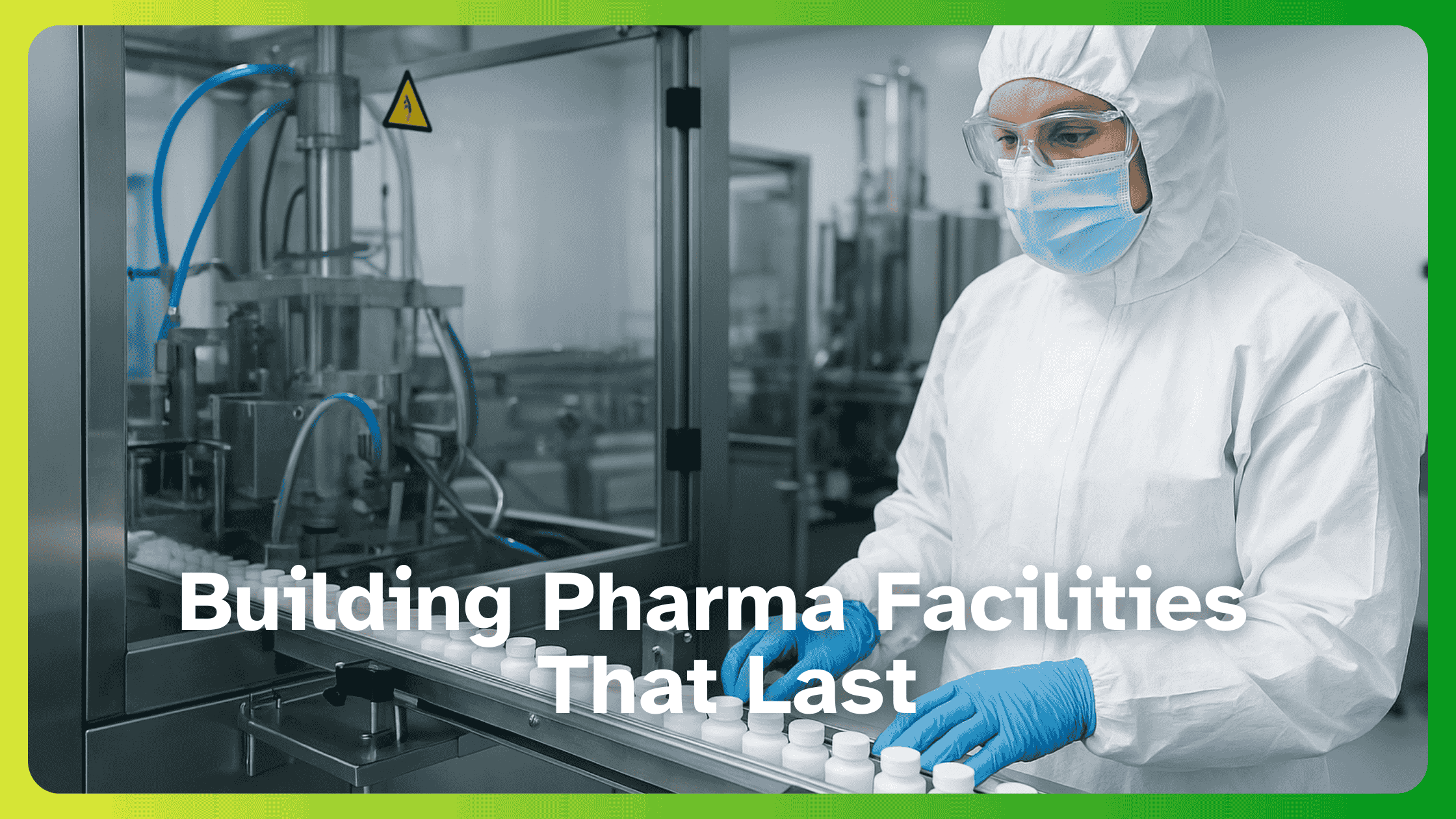Publisher
India Pharma Outlook
published at
May 16, 2025
The Importance of Quality Assurance in a Pharma Company in Sustaining GMP Standards
Is your pharma operation truly GMP-compliant, or are hidden gaps in quality assurance manufacturing putting everything at risk?
In today’s pharmaceutical landscape, where regulatory scrutiny is tightening and global supply chains are more vulnerable than ever, Quality Assurance (QA) is no longer a back-end function- it’s the strategic core of pharmaceutical quality assurance.
From validating equipment and training staff to auditing suppliers and enforcing SOPs, QA is the frontline defense that sustains Good Manufacturing Practice (GMP) standards across the board. This article explores how QA teams ensure compliance, prevent failures, and build systems that sustainably scale quality assurance in the pharmaceutical industry.
Why is GMP Compliance Critical & How Do QA Teams Sustain It
GMP regulations are designed to ensure that pharmaceutical products are consistently produced and controlled according to quality standards. QA teams play a pivotal role in enforcing GMP by:
Ensuring Standard Operating Procedures (SOPs) Adherence: QA teams develop, implement, and monitor SOPs to maintain consistency in quality assurance in manufacturing processes. They regularly review and update these procedures to align with current GMP standards.
Maintaining Documentation Accuracy: Accurate and comprehensive documentation is vital for traceability and accountability. QA teams oversee record-keeping practices to ensure all manufacturing activities are properly documented.
Overseeing Risk Management: By conducting regular risk assessments, QA teams identify potential issues in the manufacturing process and implement corrective actions to mitigate them.
QA’s Role in SOP Adherence
Standard Operating Procedures (SOPs) are detailed, written instructions designed to achieve uniformity in the performance of specific functions. QA teams are responsible for:
- Drafting SOPs: Creating clear and concise procedures that comply with GMP requirements.
- Enforcing SOPs: Ensuring that all staff follow established procedures through regular monitoring and audits.
- Updating SOPs: Revising procedures in response to changes in regulations, technology, or process improvements.
Common SOP Errors in GMP
Some frequent SOP errors include:
- Ambiguous Instructions: This leads to inconsistent application of procedures.
- Outdated Procedures: Failing to reflect current practices or regulatory changes.
- Incomplete Documentation: Missing signatures, dates, or necessary details.
These errors can result in non-compliance, product recalls, and regulatory penalties.
QA in Supplier Qualification & Audits
QA teams assess and approve suppliers to ensure that raw materials meet GMP standards. This involves:
- Conducting Supplier Audits: Evaluating the supplier's facilities, quality systems, and compliance with GMP.
- Monitoring Supplier Performance: Regularly reviewing supplier quality data and addressing any issues promptly.
By maintaining strict supplier qualification processes, QA ensures that only high-quality materials are used in production, a key aspect of quality assurance in pharma company operations.
QA in Equipment & Facility Compliance
QA teams ensure that equipment and facilities are suitable for their intended use and comply with GMP standards by:
- Validating Equipment: Confirming that equipment operates correctly and consistently produces quality products.
- Maintaining Facility Hygiene: Implementing cleaning protocols to prevent contamination.
- Utilizing Digital Twin Technology: Employing virtual replicas of physical assets to simulate, predict, and optimize performance, enhancing validation processes.
QA in Training & Compliance Culture
QA is responsible for fostering a culture of compliance through:
- Training Programs: Educating staff on GMP requirements, SOPs, and quality standards.
- Continuous Education: Keeping employees updated on regulatory changes and best practices.
- Minimizing Human Errors: Ensuring that personnel are competent and understand the importance of compliance reduces the likelihood of mistakes.
Key Responsibilities of QA Teams in Sustaining GMP
QA teams ensure GMP compliance by auditing suppliers, maintaining regulatory alignment, and overseeing every process from documentation to deviation management. They lead employee training programs tailored to GMP standards and drive continuous improvement by identifying inefficiencies and implementing corrective actions. Their oversight ensures consistent product quality and compliance across the production lifecycle- essential functions within qa in pharma company systems.
Process Validation & Monitoring
Process validation is how QA ensures consistency in product quality. It begins with process design, where QA collaborates with production and engineering teams to develop robust manufacturing protocols. These processes are then subjected to process qualification- a series of controlled tests to prove that systems function as intended under real-world conditions.
Once a process is approved, QA continuously monitors operational data to track variability. If deviations or inefficiencies appear, corrective actions are initiated. This ongoing validation builds confidence in process reliability and reduces the likelihood of quality failures, underscoring the importance of pharmaceutical quality assurance.
Documentation & Record-Keeping
Comprehensive documentation is non-negotiable in GMP environments. QA ensures that all records- from batch production logs to deviation reports- are complete, accurate, and accessible. Every batch must have a corresponding manufacturing record detailing ingredients, equipment used, timelines, and in-process checks.
Deviation logs are maintained to record any unexpected variations, and corrective actions are thoroughly documented with follow-up verification. These records are not just for audits- they enable root cause investigations, trend analysis, and process optimization. In a qa in a pharma company framework, nothing is undocumented or unverifiable.
Deviation Management & CAPA Implementation
Deviations from standard procedures, even minor ones, can jeopardize product safety and compliance. QA is responsible for managing these events through structured CAPA (Corrective and Preventive Action) systems.
Each deviation is investigated to identify the root cause. Corrective actions are deployed to resolve the immediate issue, such as re-training an operator or recalibrating equipment. Preventive actions are then implemented to ensure the same problem doesn’t reoccur, which may involve SOP updates, process redesigns, or supplier requalification. This feedback loop ensures GMP alignment is not just maintained, but constantly improved through effective quality assurance in manufacturing.
Change Control Management in GMP Environments
Change is inevitable in pharma operations- whether it's a raw material source, equipment model, or process tweak. QA manages these transitions through a formal change control system. Before any change is approved, QA performs an impact assessment to evaluate potential risks to product quality or regulatory compliance.
If approved, the change is implemented in a controlled manner, with clear documentation and traceability. Post-implementation reviews ensure that the change performs as expected without negative outcomes. This governance is a key pillar of quality assurance in pharmaceutical industry processes.
Ensuring Data Integrity & Compliance with ALCOA+ Principles
In pharmaceutical quality assurance, data integrity is as critical as the product itself. QA ensures compliance with ALCOA+ principles- data must be attributable, Legitimate, contemporary, original, and accurate, as well as complete, consistent, enduring, and available.
To achieve this, QA teams are increasingly integrating electronic systems that automate data capture, enforce access controls, and maintain audit trails. Electronic Batch Records (EBRs), digital signatures, and 21 CFR Part 11–c-compliant systems ensure that every piece of data is traceable and tamper-proof. This level of integrity is essential not only for regulatory inspections but also for internal decision-making and quality forecasting, making it a non-negotiable part of quality assurance in manufacturing strategies.
GMP Compliance Challenges & How QA Teams Overcome Them
Maintaining GMP compliance is a moving target, and QA teams must adapt constantly to stay aligned with evolving expectations- a critical function within any quality assurance in pharma company.
- Regulatory Shifts: Different markets (US FDA, EMA, CDSCO) update guidelines frequently. QA must ensure all practices are updated across manufacturing, documentation, and training to comply with quality assurance in pharmaceutical industry benchmarks.
- Supply Chain Disruptions: Global material shortages or logistics delays affect raw material timelines. QA teams create contingency sourcing strategies and maintain stringent vendor controls to support consistent pharmaceutical quality assurance outcomes.
- Technology Limitations: Many legacy systems can’t meet today’s traceability and data integrity requirements. QA must push for investment in modern QMS platforms that support scalable, compliant processes.
- Workforce Turnover: Training new employees repeatedly while ensuring zero drop in compliance is one of the toughest QA challenges. This calls for scalable training systems and competency testing- key aspects of successful qa in pharma company operations.
These issues require QA to operate as a strategic partner, not just a checkpoint.
Risk Assessment & Proactive Compliance Strategies
QA teams use FMEA (Failure Mode and Effects Analysis) and HACCP (Hazard Analysis and Critical Control Points) to spot risks early. By assessing severity, occurrence, and detectability, they prioritize corrective action, proactively reinforcing quality assurance in pharmaceutical industry resilience.
For example, if a supplier has frequent shipping delays, the QA team might introduce dual sourcing and tighter incoming material testing to avoid future downtime or GMP violations, upholding core standards of pharmaceutical quality assurance.
Data Integrity & Digital Compliance
With growing reliance on digital tools, ensuring that data systems align with GMP is vital. QA teams now validate all electronic systems under 21 CFR Part 11 to ensure compliance and audit readiness. They also maintain secure, compliant electronic batch records (EBRs), which provide end-to-end traceability of manufacturing activities. To safeguard data, digital signatures and secure login protocols are implemented to prevent unauthorized access or tampering.
For pharma-construction partners, it's crucial to plan facility infrastructure to support these requirements, ensuring there’s adequate space for servers, validated software systems, and data security frameworks from the ground up. These systems form the digital backbone of modern quality assurance in manufacturing.
Supply Chain & Material Compliance
Even the most robust production line can fail if the raw materials are substandard. QA plays a critical role by ensuring vendors are GMP-compliant and provide verified Certificates of Analysis (CoAs) for every batch. They maintain full traceability across the supply chain, from source to finished product, and verify materials for identity, purity, and strength before they’re released into production.
This is particularly important in multi-product facilities, where QA ensures effective segregation protocols and documentation workflows are in place to prevent mix-ups and contamination, solidifying quality assurance in pharma company foundations.
Workforce Training & GMP Compliance
In pharmaceutical quality assurance, human error remains one of the biggest threats to compliance. QA mitigates this by ensuring every new employee undergoes GMP-specific training before entering production. Training records are systematically maintained, and refresher sessions are conducted to keep teams aligned with the latest standards and procedural updates.
Many QA teams now use Learning Management Systems (LMS) to track training completion, automate renewals, and ensure that no gaps exist in compliance readiness- another sign of maturity in quality assurance in pharmaceutical industry operations.
Best Practices for Strengthening QA Processes in GMP-Driven Environments
As regulatory expectations grow more rigorous and operations become more complex, pharma companies must strengthen their QA frameworks beyond the basics. This means embedding technology, data-driven decision-making, and proactive risk management into every quality process. The following practices highlight how leading QA teams are staying ahead of compliance risks while improving efficiency and scalability, advancing the role of quality assurance in manufacturing.
QA Automation & Digital Transformation
Automation minimizes human error and speeds up compliance workflows. Technologies now widely adopted include AI for deviation pattern analysis, which helps QA identify trends before they escalate into compliance issues. IoT is used for equipment health monitoring, enabling real-time maintenance alerts. Blockchain offers immutable audit logs, strengthening data integrity and traceability.
Additionally, eQMS platforms provide centralized document control, simplifying access, versioning, and compliance. For companies that are involved in facility planning, it’s important to factor in automation infrastructure- space, cabling, Wi-Fi zoning, and software compatibility. All of these technologies play an increasingly central role in future-ready quality assurance in pharmaceutical industry systems.
Continuous Improvement & QA Metrics
QA teams must prove their impact with numbers. Common QA KPIs include the batch rejection rate, which reflects product quality at scale. They also track the number of deviations per batch to identify recurring process failures. Time to close CAPAs is another critical indicator of a team’s responsiveness, while training compliance percentage helps verify that staff are continually qualified. Tracking these metrics helps identify process bottlenecks and set realistic improvement targets across the organization- a key goal for any qa in a pharma company looking to scale compliantly.
Risk-Based Approaches in QA
Not all risks are equal. QA teams focus on high-risk processes, such as sterile manufacturing, where contamination risks are highest. They also monitor repeat offenders, such as vendors or equipment that consistently cause deviations. Regulatory findings from audits are reviewed closely to adjust internal risk profiles. This helps pharma firms optimize effort where it matters most, while construction partners can customize cleanroom classes, HVAC zoning, or utility redundancy accordingly, strengthening the strategic edge of pharmaceutical quality assurance practices.
Predictive Analytics for GMP Compliance
Leading QA teams are beginning to use predictive analytics to prevent quality failures. This includes analyzing trends in equipment calibration data to forecast breakdowns or inconsistencies. QA also monitors employee training gaps before audit season, ensuring readiness. AI is used to flag deviation trends by shift, machine, or process, allowing teams to intervene early.
The goal? Spot failure before it happens. Pharma-construction firms should be ready to integrate sensor networks, smart meters, and data capture points throughout the facility to support this advanced level of quality assurance in manufacturing.
How Inotek Sets New Standards for GMP Compliance in Pharma
Inotek brings a construction-first mindset to quality assurance in pharma company operations. Their facilities aren’t just built for functionality—they’re designed to be GMP-compliant from the ground up.
Cleanroom layouts are planned for optimal personnel and material flow with built-in segregation. Utility systems are engineered with validation, monitoring, and redundancy in mind. Crucially, QA teams are integrated during the design phase and not brought in after, which ensures that compliance is embedded and not patched in later.
What truly differentiates Inotek is its QA-first project approach. The company collaborates closely with client QA teams, regulatory consultants, and technology partners to engineer compliance directly into infrastructure. This eliminates the need for expensive retrofits, reduces revalidation efforts, and builds confidence with regulators and auditors.
Inotek’s integrated model ensures every facility aligns with the highest pharmaceutical quality assurance standards from day one, future-proofing operations and streamlining regulatory readiness.
Looking to build or upgrade a GMP-compliant facility?
Partner with Inotek to embed quality, compliance, and efficiency into your manufacturing infrastructure—right from the blueprint.
FAQs
How does quality assurance in pharmaceutical industry ensure GMP compliance?
Quality assurance in pharmaceutical industry ensures GMP compliance by enforcing SOPs, validating processes, and monitoring documentation. It governs every stage of production, from raw material testing to final batch release, ensuring products meet safety and quality standards set by regulatory bodies through rigorous, standardized practices.
What are the key responsibilities of quality assurance in a pharma company for maintaining GMP standards?
Quality assurance in a pharma company manages process validation, deviation handling, documentation, and staff training. It ensures all manufacturing steps comply with GMP guidelines and initiates continuous improvement programs. QA also leads audits and change control to maintain operational consistency, traceability, and product safety across facilities.
How does quality assurance in manufacturing help in supplier qualification for GMP compliance?
Quality assurance in manufacturing ensures GMP compliance by auditing and qualifying suppliers based on material integrity, certification, and adherence to standards. QA verifies raw material quality, enforces documentation, and manages risk through supplier monitoring programs, ensuring only approved vendors contribute to compliant pharmaceutical production.
What role does digital transformation play in pharmaceutical quality assurance and regulatory compliance?
Digital transformation enhances pharmaceutical quality assurance by automating batch records, enforcing ALCOA+ principles, and enabling real-time monitoring through eQMS. It strengthens regulatory compliance by reducing human error, improving traceability, and enabling secure, validated systems that support GMP requirements across all stages of drug manufacturing.




